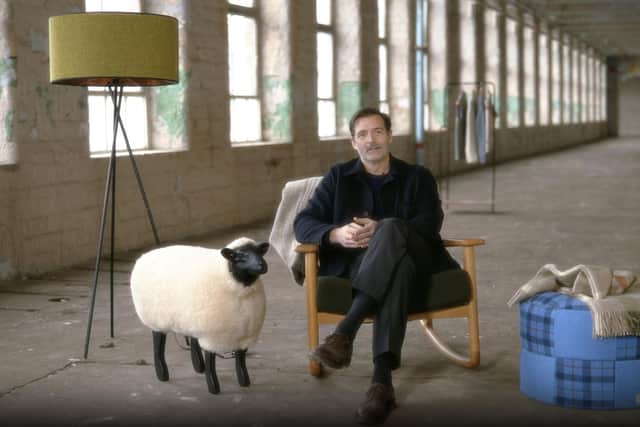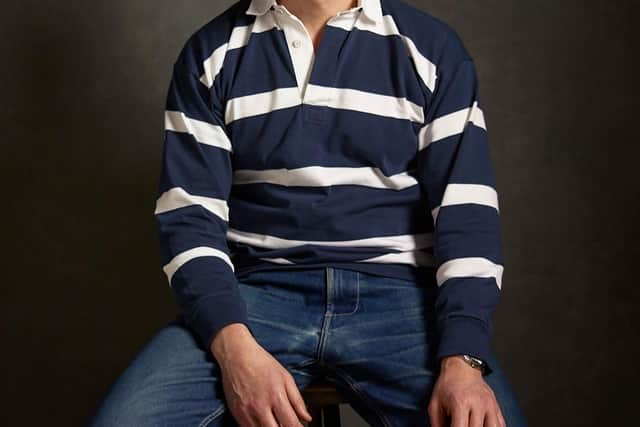Wear it well and then recycle, Yorkshire shoppers urged
Over the past five years, conversations around ‘fashion conscious’ in the clothing industry have surged online and in the press. British Wool’s research has revealed that there is still a lot to be done to encourage Brits to make sustainable choices when it comes to the items already in their wardrobes.
Often dubbed as the generation most concerned about environmental changes, Gen Z was found to be the guiltiest generation of throwing away clothes in Yorkshire, averaging 20 pieces per month, or 243 pieces a year. What’s more, only seven per cent of Gen Z’ers nationwide would expect to keep a garment for more than five years.
Advertisement
Hide AdAdvertisement
Hide Ad

On the other hand, people from Yorkshire aged 55 and over throw away the least amount of clothes, just four per month on average, or 48 pieces a year. Reasons for clothing being thrown away ranged from items being faulty, stained, or becoming ill-fitting.
Patrick Grant, known for his on-screen work as a judge on The Great British Sewing Bee, as well as Creative Director and Founder of Community Clothing, said: “I think as a nation we’ve stopped caring about our clothes. It’s difficult for people to care about their clothes when you can buy a piece of clothing for less than the cost of a cup of coffee.
“Clothing recycling in this country is filled with garments which still have their tags on because they’re brand new – we just don’t care and we’re very thoughtless when it comes to our clothing and that is causing huge problems. Clothing has an incredibly harmful effect on the planet and on our own personal health. As consumers, there are lots of things that we can do – simply think more carefully about why you’re buying them, where the material comes from and who has made it. Think about what happens to it when you stop wanting to wear it.”
Advertisement
Hide AdAdvertisement
Hide AdThe wardrobes of people from Yorkshire are getting bigger, owning an average of 93 pieces of clothing, up seven per cent since 2022.


Additionally, the research also found that 40 per cent of Yorkshire residents are more likely to purchase second-hand clothing compared to a year ago, with sustainability (33%) listed as one of the top reasons.
Yet, more than a third of those aged 55 and over nationwide said they are less likely to purchase second-hand, which may be as a result of this generation throwing away less clothes compared to other generations.
When it comes to second-hand shopping, people in Yorkshire agreed that jumpers, sweatshirts and shirts are most likely to stand the test of time.
Advertisement
Hide AdAdvertisement
Hide AdMark Hogarth, Global Brand Ambassador at Harris Tweed Hebrides, said: “Clothes at their basic level are functional, but if you get it right you do have an emotional connection to them. It’s only through wearing the clothes that you get that real depth of emotional connection and that’s where you value your clothes and you’re bound to keep them for longer.
“When you’re looking to buy a new garment of clothing, ask this question: do I need this and what is my cost-to-wear projection? Although some garments made of natural materials may be a little more expensive, when you project onto five to 10 years, or longer in the case of some wool or tweeds, all of a sudden it might not seem so expensive. The better-quality clothing you have, the less that you need.
“Fashion when it’s done at the right level goes just beyond the functional. It can be art, it can just be stylish, and it can also be cool. It’s quite easy to acquire good quality wool garments in resale or charity shops, but I think sometimes you’ve got to make that investment as well. Here in the UK we have got an incredible natural resource in wool and the production is a very high standard.”
Haldi Kranich-Wood, Lead for Sustainable Brand Partnerships at British Wool, said: “We work closely with some of the top brands in the UK to support their sustainability credentials and provide materials to ensure consumers have the option to shop consciously. The diverse wool types on offer in the UK mean that British wool can really provide a truly sustainable solution - wool uses less energy and water than other fibres. For example, wool uses 18% less energy than polyester and nearly 70% less water than cotton to produce 100 jumpers. Products made out of synthetic fibres can take up to 1,000 years to biodegrade, while wool biodegrades in a fraction of that time.”
Comment Guidelines
National World encourages reader discussion on our stories. User feedback, insights and back-and-forth exchanges add a rich layer of context to reporting. Please review our Community Guidelines before commenting.
